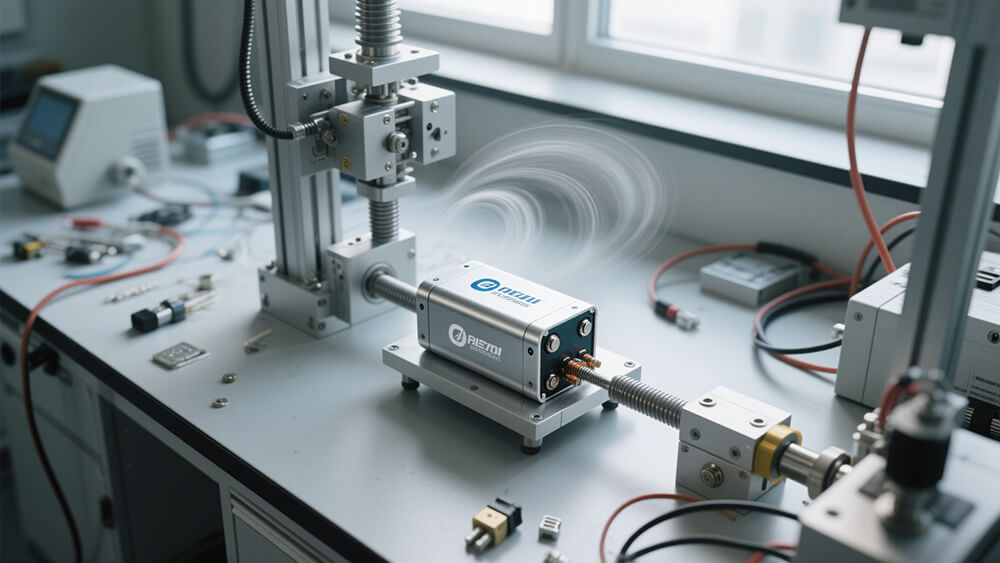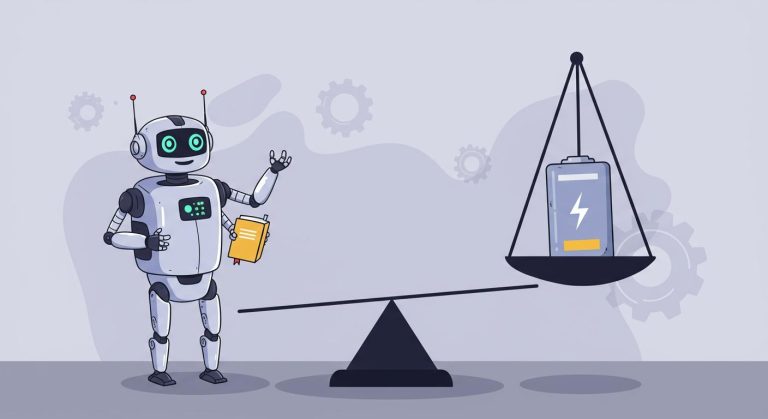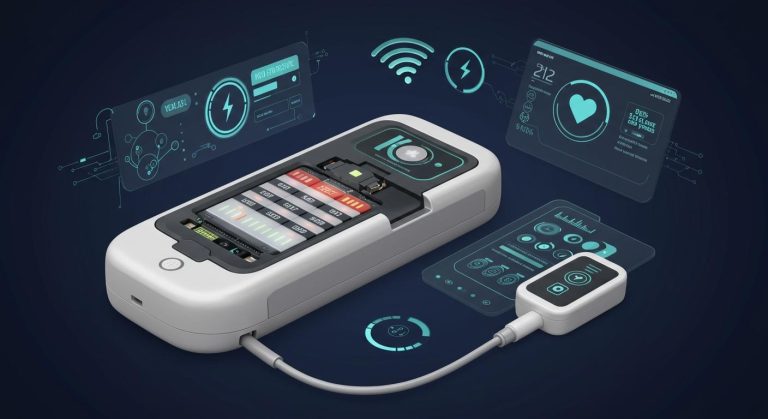
The effect of vibration on lithium battery performance is significant. You may notice structural damage, reduced energy efficiency, and a shortened lifespan in high-stress environments like electric vehicle power batteries. These effects compromise safety and reliability, especially in demanding applications such as robotics, industrial systems, and energy storage. Proper design minimizes these risks.
Key Takeaways
Shaking can harm lithium battery parts, lowering their performance and life. Use strong materials to make them last longer.
In tough conditions, shaking can cause batteries to overheat or fail. Use protective covers to keep them safe.
Test batteries for shaking during design to check reliability. Following rules helps them work well in hard situations.
Part 1: Effect of Vibration on Lithium Battery Components

1.1 Structural Damage to Electrodes and Separators
Mechanical vibration can severely impact the structural integrity of lithium-ion battery components. You may notice that prolonged exposure to vibration environments causes the active materials on electrodes to detach from their current collectors. This detachment reduces the effective reaction area, leading to a decline in battery capacity. For instance, materials like lithium cobalt oxide (LCO) or graphite are particularly prone to such damage.
The separators, typically made of polyethylene (PE) or polypropylene (PP), are also affected. Vibrations can deform their microporous structure, obstructing ion transport and increasing internal resistance. In extreme cases, this deformation may even result in localized short circuits. Additionally, the misalignment of electrode sheets due to vibration accelerates performance degradation by disrupting the uniformity of the battery’s internal structure.
Tip: To mitigate these issues, consider using advanced materials like ceramic-coated separators or flexible binders that enhance mechanical strength and flexibility.
1.2 Increased Internal Resistance and Chemical Instabilities
In a vibration environment, the internal resistance of a lithium-ion battery often increases. This occurs because vibrations loosen the connections between tabs and current collectors, creating poor electrical contact. As a result, the battery’s charge and discharge efficiency decreases, and additional heat is generated during operation.
Chemical instabilities also arise due to the effect of vibration on lithium battery components. For example, the solid electrolyte interphase (SEI) layer on the anode surface may crack under stress. These cracks expose the electrolyte to further decomposition, accelerating lithium loss and reducing the battery’s cycle life. Studies indicate that long-term vibration can shorten a battery’s lifespan by 20-30%, depending on the intensity and frequency of the mechanical vibration.
1.3 Displacement and Misalignment of Battery Cells
Battery cells within a pack are particularly vulnerable to displacement and misalignment caused by vibration. This issue is especially critical in high-vibration applications like robotics or industrial machinery. Misaligned cells disrupt the uniform distribution of electrical and thermal loads, leading to uneven aging and potential safety risks.
In severe cases, displacement can damage interconnections between cells, increasing the likelihood of short circuits or thermal runaway. For example, in electric vehicles, road-induced vibrations can cause fatigue in the battery pack’s mechanical structure. Manufacturers often conduct rigorous battery vibration tests to ensure durability under such conditions.
Impact | Cause | Result |
|---|---|---|
Electrode material detachment | Prolonged vibration exposure | Reduced capacity and efficiency |
Separator deformation | Stress on microporous structure | Increased resistance, risk of short circuit |
Cell misalignment | High-frequency vibration | Uneven aging, safety hazards |
Note: Implementing robust shock absorption technologies and protective casings can significantly reduce the adverse effects of vibration on lithium-ion batteries.
For customized solutions to enhance the vibration resistance of your battery packs, explore our custom battery solutions.
Part 2: Performance and Safety Impacts

2.1 Reduced Energy Efficiency and Capacity
Vibration significantly affects the energy efficiency and capacity of lithium-ion batteries. When subjected to prolonged mechanical stress, the internal components of the battery, such as electrodes and separators, experience structural degradation. This damage reduces the effective surface area for electrochemical reactions, directly impacting battery capacity. For instance, in high-vibration environments like electric vehicles or industrial robotics, you may notice a decline in energy output over time.
Additionally, vibrations increase internal resistance by loosening connections between tabs and current collectors. This resistance not only reduces charge and discharge efficiency but also generates excess heat, further degrading battery performance. A poorly performing battery can lead to operational inefficiencies, especially in critical applications like robotics or infrastructure systems.
Tip: Conducting a battery vibration test during the design phase ensures that your battery packs can withstand the mechanical stresses of their intended application.
2.2 Accelerated Aging and Shortened Lifespan
The effect of vibration on lithium battery systems accelerates aging and shortens their lifespan. Vibrations cause microcracks in the solid electrolyte interphase (SEI) layer on the anode surface. These cracks expose the electrolyte to further decomposition, leading to lithium loss and reduced cycle life. Over time, this degradation can shorten the battery’s lifespan by 20-30%, depending on the vibration intensity and frequency.
In high-vibration applications, such as industrial machinery or transportation systems, the cumulative impact of mechanical stress becomes more pronounced. Misaligned cells within a battery pack age unevenly, creating hotspots that further accelerate wear and tear. This uneven aging compromises the reliability of the entire system, increasing maintenance costs and downtime.
Impact | Cause | Result |
|---|---|---|
SEI layer cracking | Mechanical stress | Lithium loss, reduced cycle life |
Uneven cell aging | Misalignment due to vibration | Hotspots, reduced reliability |
Increased maintenance | Accelerated wear and tear | Higher operational costs |
To mitigate these effects, you should consider advanced design strategies, such as integrating flexible binders and shock-absorbing materials into your battery packs.
2.3 Risks of Overheating, Short-Circuiting, and Thermal Runaway
Vibration poses significant safety risks, including overheating, short-circuiting, and thermal runaway. Excessive vibration can deform separators or displace metallic particles within the battery, leading to internal short circuits. These shorts generate localized heat, which can escalate into thermal runaway—a chain reaction that causes the battery to overheat, vent gases, or even explode.
The risks become more severe in high-stress environments. For example, in electric vehicles, road-induced vibrations can cause mechanical fatigue, increasing the likelihood of overheating. Similarly, in industrial applications, dynamic mechanical loads can create nonconforming contact interfaces, leading to local temperature spikes.
Risk Type | Description |
|---|---|
Overheating | Heat buildup can reach 500°C (932°F), leading to fire or explosion due to thermal runaway. |
Short-Circuiting | Electrical shorts can develop from microscopic metallic particles, causing significant heat and damage. |
Thermal Runaway | Once initiated, thermal runaway can lead to ‘venting with flame’ or ‘rapid disassembly’ of the cell. |
Vibration Impact | Excessive vibration is noted as a critical factor that can lead to battery instability and failure. |
To address these risks, manufacturers conduct rigorous battery vibration tests to ensure durability and safety. Standards like UN38.3 and IEC 62619 provide guidelines for testing batteries under simulated vibration conditions. Implementing these protocols helps you minimize safety hazards and maintain operational reliability.
Note: For customized solutions to enhance the safety and vibration resistance of your lithium-ion battery packs, explore our custom battery solutions.
Part 3: Mitigation Strategies for Vibration-Resistant Lithium Battery Packs

3.1 Advanced Material Selection and Design Enhancements
Selecting the right materials and optimizing design are critical for creating vibration-resistant lithium-ion battery packs. High-strength materials like nylon and fiberglass reinforcement improve structural integrity and vibration resistance. Flexible binders, such as modified PVDF, enhance electrode durability by reducing the risk of cracking under mechanical stress. Ceramic-coated separators also provide added strength, minimizing deformation during prolonged vibration exposure.
Design enhancements further mitigate vibration effects. For instance, cylindrical cells like 18650 models exhibit better vibration resistance compared to pouch cells due to their robust structure. Incorporating elastic pads or polyurethane shock absorbers within the battery module can effectively dampen high-frequency vibrations. These measures ensure the longevity and reliability of lithium-ion batteries in demanding applications like robotics and industrial systems.
Tip: Avoid exposing battery packs to severe vibration during assembly or use. Implement proper fixing and buffering measures to maintain their integrity.
3.2 Protective Casings and Shock Absorption Technologies
Protective casings combined with advanced shock absorption technologies significantly enhance the durability of lithium-ion battery packs. Waterproof and corrosion-resistant enclosures, such as those with graphene-based nano-coatings, reduce water permeability by up to 94%. These features are essential for applications in harsh environments, including offshore systems and electric vehicles.
Shock absorption technologies, such as hydraulic dampers and elastomeric mounts, minimize the impact of mechanical stress. For example, battery packs designed with MIL-STD-810G-certified materials can withstand shocks up to 100G. This level of protection ensures consistent performance and reduces failure rates under extreme conditions.
Metric | Value |
|---|---|
Impact energy absorption | 90% from 50G vibrations |
Mechanical shock resistance | Withstands 100G shocks |
Waterproofing depth capability | Survives 1.5m submersion for 30 minutes |
3.3 Industry Standards and Testing Protocols for Vibration Durability
Adhering to industry standards and conducting rigorous battery vibration tests are essential for ensuring vibration durability. Standards like UN 38.3 and SAE J2380 provide comprehensive guidelines for testing lithium-ion batteries under simulated vibration conditions. These protocols assess the battery’s ability to withstand mechanical stress during transportation and operation.
Standard | Description |
|---|---|
UN 38.3 | Simulates vibration loads during transportation. |
SAE J2380 | Evaluates long-term road-induced vibration effects on electric vehicle batteries. |
IEC 62660-2 | Includes reliability and abuse tests, such as vibration testing. |
ISO 19453-6 | Specifies environmental conditions and testing standards for traction batteries. |
Testing protocols like GB/T 31467.3-2015 and ECE R100-02 further validate the vibration resistance of automotive power battery systems. These standards ensure that lithium-ion batteries meet safety and performance requirements in high-vibration environments.
Note: For customized solutions to enhance the vibration resistance of your lithium-ion battery packs, consult our custom battery solutions.
Vibration significantly impacts lithium-ion battery performance, safety, and lifespan, especially in high-stress applications like robotics, industrial systems, and transportation infrastructure. You can mitigate these risks by adopting advanced designs, protective casings, and rigorous testing protocols.
Prioritizing vibration-resistant solutions ensures operational reliability and efficiency in demanding environments. Explore custom battery solutions to enhance your battery systems’ durability and performance.
FAQ
1. How does vibration affect lithium-ion battery performance?
Vibration causes structural damage, increases internal resistance, and accelerates aging. These effects reduce capacity, efficiency, and lifespan. Learn more about lithium-ion batteries.
2. What industries require vibration-resistant lithium battery solutions?
Industries like robotics, industrial systems, and transportation demand vibration-resistant batteries. Explore custom battery solutions for tailored designs.
3. How can you ensure battery safety in high-vibration environments?
Use advanced materials, shock-absorbing designs, and rigorous testing. Large Power offers custom battery solutions to enhance safety and durability.






